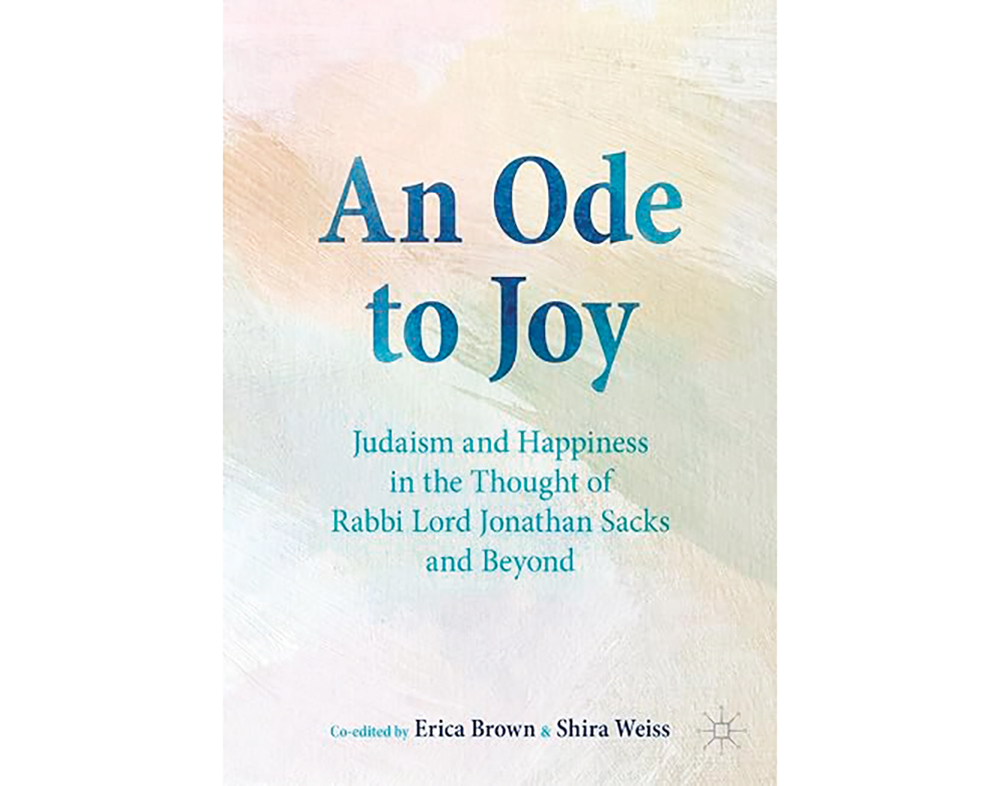
Reviewing: “An Ode to Joy: Judaism and Happiness in the Thought of Rabbi Lord Jonathan Sacks and Beyond” by Erica Brown and Shira Weiss (editors). Palgrave Macmillan; 1st ed. 2023. Paperback. 420 pages. ISBN-13:
978-3031282287.
It is a Torah prohibition to speak lashon hara against another individual, even if the information is accurate. And it is much worse to speak lashon hara before a large group since the greater the number of people listening, the greater the speaker’s transgression as the person they are talking about is further disgraced by the heightened publicity.
The opposite is true when publicly praising someone. Sharing stories of great people and their myriad accomplishments brings glory to them or to their memory and is a sanctification of the name of God. In their remarkable new book ”An Ode to Joy: Judaism and Happiness in the Thought of Rabbi Lord Jonathan Sacks and Beyond,” editors Erica Brown and Shira Weiss have done a fantastic service to the memory of Rabbi Sacks
Here, Brown, Weiss and almost 50 others share their thoughts and reflections on how Rabbi Sacks approached the topics of joy and happiness. These are not essays of abstract thought and theory. Rather, they are insightful essays from those who had a relationship with Rabbi Sacks and whose lives he affected.
In October 2021, YU announced the founding of the Rabbi Lord Jonathan Sacks Center for Values and Leadership, of which Brown is the vice provost and Weiss is assistant director.
Dr. Tal Ben-Shahar, who pioneered the study of happiness, writes in the foreword of meeting Rabbi Sacks on a plane and how the long flight passed as if in an instant while speaking with him. Like many of the contributors, he noted that Rabbi Sacks was a bridge builder who constructed countless bridges among religion, disciplines and people. Our goal, Dr. Ben-Shahar states, should be to live up to Rabbi Sacks’ vision of a world with my bridges connecting us together.
The fascinating thing about the essays in the book is that they are not written as academic overviews of Rabbi Sacks. Rather, they are vignettes from some of his closest students. And these students span the gamut of the Jewish world. Rabbi Sacks did not want to live in an echo chamber where his adoring students mimicked his words. He wanted to be challenged and grow with them.
In her chapter on the joy of the Hasidim of the Baal Shem Tov and Rabbi Nachman of Breslov, Dr. Biti Roi writes that the image of Hasidim dancing in a forest and drinking wine is a superficial view of a complex and demanding emotional and spiritual discipline. And to that, all of the contributors show how Rabbi Sacks, a man of incredible depth and brilliance, was able to eloquently answer the many demanding topics of our times. He did this in the most intellectually honest manner, never trying to dumb down his answers. He was the antithesis of superficial, as is manifest in each of these insightful essays.
If this volume were about the life of Rabbi Sacks, it would be a wonderful book just for that. But this is a book on only one of countless topics that were near and dear to him. This book is a testament to his greatness and vision, and all of the authors contribute to ensuring his brilliance and legacy stay with us.
Ben Rothke lives in New Jersey and works in the information security field. He reviews books on religion, technology, philosophy and science. Follow him on Twitter at @benrothke. His new book was recently published: “The Definitive Guide to PCI DSS Version 4: Documentation, Compliance, and Management.”









